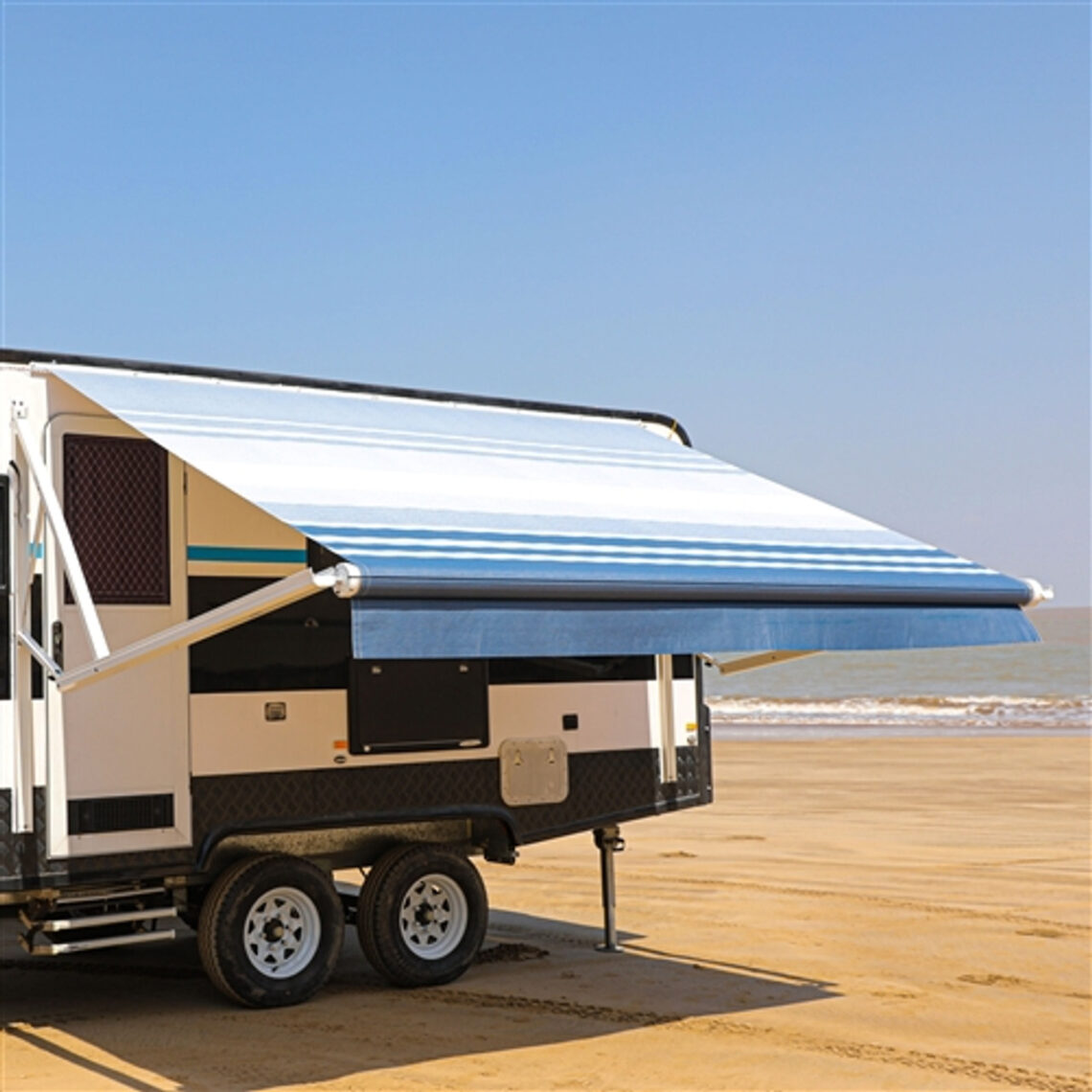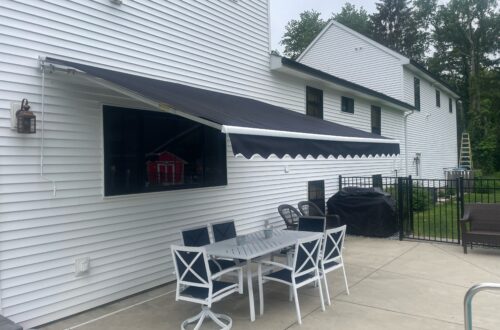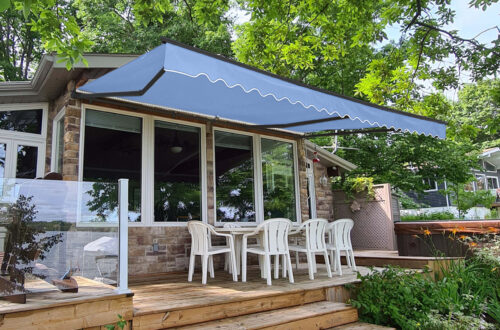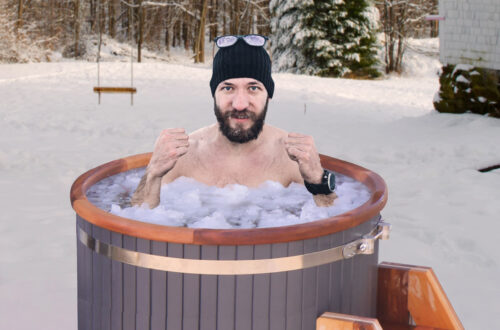Over the course of your many camping adventures, your RV’s awning will be put through the wringer. Sun, rain, snow—you name it. Even one trip can leave your once-pristine awning covered in dirt, grime, and debris. And if you roll it up wet and dirty, you risk the growth of unsightly and unhealthy mold.
This is why you should frequently clean your RV awning—and not just to improve its appearance. A proper wash and scrub as part of your routine RV maintenance can also improve the awning’s functionality and extend its lifespan.
So, if you’re wondering how to clean RV awning covers, this step-by-step guide will show you.
Here’s what you need to know to have your camper awning clean and ready for your next trip to the great outdoors.
Step #1: Inspect the Awning
Your first task will be to carefully inspect the awning, looking for any tears or damage.
Ideally, tears should be patched or repaired prior to cleaning so that the awning fabric won’t be damaged even further. If your awning is beyond saving, you may consider learning how to replace RV awning fabric.
During this evaluation, take note of the specific types of dirt and debris present, as the treatment for normal grime will likely differ from that of mold, mildew, or tree sap. Doing so will ensure that you use the most effective cleaning method for the job.
Additionally, consider whether to remove your awning before you start scrubbing. Permanent awnings and lightly dirty retractable awnings will likely be easier to clean in place. If you anticipate some heavier scrubbing or hard-to-reach places while atop a ladder, the job will be easier (and safer) to complete by loosening the mounting bolts, lowering the awning, and extending it along the ground.
Step #2: Gather Cleaning Supplies
Before you can clean, there are a few items you’ll need to assemble ahead of time.
No matter the material, you’ll still need to grab the following items:
- Ladder
- Hose with a high-pressure nozzle
- Long-handle scrub brush
- Bucket
- Cleaning solution
- Magic Eraser mop
- 303 re-sealer
Awning Materials
How you clean the covering will also depend on the awning material. Most awnings are made from either acrylic or vinyl.
- Acrylic – Acrylic awnings, made from a breathable woven fabric, can be especially tricky to clean due to their delicate nature. Dirt and tree sap can easily become trapped in the weave, and the acrylic fabric also comes with a water-repelling finish that can be easily scrubbed off if you’re not careful.
- Vinyl – Vinyl awning fabric is typically not as porous as acrylic, so it does a better job resisting mildew and sap. You can scrub a bit harder with vinyl, though you’ll still need to be careful to avoid removing the protective coating.
While the cleaning process will be similar for either fabric awning material, you need to be careful with the top layer. The water-repellent coating can wear away if the awning is cleaned too often or scrubbed too vigorously.
Selecting a Cleaning Solution
There are dozens of different solutions perfectly suited for cleaning your camper awning. Typically, you’ll select one of three options:
- Store-bought – Many RV companies produce solutions made for the express purpose of cleaning an RV awning. While they may cost a bit extra, these pre-made cleaners have been precisely formulated for the specific type of fabric. And they’re easy to use—some of the brands only need to be sprayed on and then rinsed for a complete clean. Top options include:
- B.E.S.T Awning Cleaner
- Camco Pro-Strength Awning Cleaner
- Dometic DIY Awning Mix
- Star Brite Mildew Stain Remover
- Homemade solution – If you’re hesitant about buying a cleaner, you can make your own homemade RV awning cleaner. A mixture of ¼ cup dish detergent, ½ cup bleach, and a gallon of water is the go-to at-home cleaner since it provides a softer solution that won’t damage the material’s surface or RV’s paint. If you’re dealing with tough stains or mold spots on your vinyl awning, some RV owners suggest using a higher concentration of bleach in your solution. However, be cautious when using bleach, as it can potentially harm the finish or decals on your RV if the concentration is too strong.
- Tree sap solutions – Tree sap can be especially difficult to remove from an awning, especially if left untouched for too long on an acrylic fabric. If your homemade or regular solution doesn’t remove those tree sap spots on the first attempt, consider following up with spot cleaning using Isopropyl alcohol or turpentine.
Note: Before using any cleaning solution on your entire awning, it’s important to first test it on a small, inconspicuous spot to ensure that it won’t cause any damage or discoloration to the fabric.

Step #3: First, a Light Clean
To begin, open up and extend the awning as far as possible. Then, clear away any leaves, loose debris, or cobwebs on the top of the awning. Sweep off the topside and underside of the canopy, as well as the metal frame.
Once that’s clear, grab your Magic Eraser mop and start wiping the awning’s inner canopy. Most of the surface-level debris and grime should come off without much effort.
Note: Ideally, this process should be done on a sunny day. The sun will help dry out the wet awning fabric later.
Step #4: Then, the Deep Clean
Once the awning is free of that initial layer of grime, it’s time for the real wash.
Mix your cleaning solution with warm water in a bucket. Then, spray down the awning so that it’s fully soaked.
Grab your scrub brush, then gently scrub the awning using a circular motion, starting at the top and working your way down. Be sure to reach into the creases and corners.
After the awning has been soaked and cleaned, roll it up tightly. Then, leave the awning rolled up in that position for an hour to ensure that the cleaning solution has time to seep in and work its magic.
Step #5: Rinse and Sun It Off
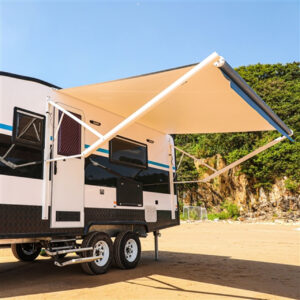
After an hour or so has passed, unroll the awning. Grab the hose and thoroughly rinse off both the top and back of the material so that all the soap is gone.
Once that’s done, leave the awning open so it can air-dry in the sun.
Be patient with this process. There’s no need to apply additional heat to the fabric. And remember, don’t roll the awning up until it’s fully dry.
Step #6: Reseal and Roll It Up
This step is especially important if you opt for a more abrasive solution and cleaning method.
After cleaning an RV awning, consider applying a re-sealer like 303 Aerospace or 303 Fabric Guard to help protect the fabric in the future and extend its life.
303 is specifically designed for outdoor fabrics like RV awnings. It can prevent fading and deterioration caused by the sun’s UV rays, while also repelling water and dirt, which makes it easier to clean in the future. Additionally, 303 contains a special formula that helps to resist mold and mildew, which can be especially beneficial for RV awnings that are often exposed to the elements.
By taking the time to reseal your awning, you can ensure that it looks fantastic and functions flawlessly for even longer.
Finally, roll up the awning. Your camper’s awning will be prepared to guard you against the elements on your next grand adventure.
If you have other types of awnings around your property, learn about how to clean awnings to keep your home looking clean and pristine.
When Should You Clean Your RV Awning?
The answer to this depends on how often you take the RV out, the camping environment, and the tree coverage at the campsite. While regular RV awning maintenance may be necessary for some, others may only require to do it occasionally.
If you use the RV full-time, you should clean it on a quarterly basis, seeing as the vehicle (and the awning) will likely spend more time in the elements. If you only use the RV occasionally, a bi-annual cleaning should suffice, typically in the spring and fall.
That said, there are some items—e.g., bird droppings or tree sap—that should be cleaned up as soon as possible to prevent the awning from staining or being permanently damaged.
Regardless of your usage habits, you should at least clean it properly and then allow it to dry before storing the camper away.
Why Does Cleaning Your RV Awning Matter?
There are three primary arguments for cleaning your RV awning on a frequent basis:
- Health – While dirt and grime may not pose any health issues, mildew and mold certainly can, especially if left to develop and spread. Camping should be a relaxing and comfortable experience. But it’s hard to enjoy the protection of your RV awning when the material is unclean and potentially hazardous.
- Aesthetics – A clean awning will appear much more attractive and welcoming than one that is dirty and stained. Mud, droppings, leaves, and other debris are unsightly. But, by cleaning your awning, you’ll have it looking as good as new.
- Prolong its lifespan – You likely don’t want to replace your RV awning unless it’s absolutely necessary. You can extend its lifespan by taking proper care of your existing awning and removing dirt or debris that could damage the fabric.
Cleaning or Replacing Your RV Awning
Now that you know how to clean camper awnings, remember that regularly performing this routine cleanse is the smart way campers can protect their investment. By following the steps above, you can prolong your awning’s lifespan, promote good health, and keep your RV looking fresh and welcoming.
But what happens if your RV awning is in tatters or beyond repair?
Then shop ALEKO’s RV products. Whether you have a motorized or manual camper awning, a class A, or a simple camper trailer, we offer dozens of RV awnings in various shapes, sizes, and colors. If you just need to replace your RV awning fabric, we have options for those too!
From professional awning cleaning tips to high-quality camping products, ALEKO is your trusted source for outdoor living. Contact us today to learn more!
Sources:
ALEKO. How To Change The Fabric On An ALEKO Half Cassette Retractable Patio Awning. https://www.youtube.com/watch?v=PmdXEFai698
303 Products. 303 Products. https://www.303products.com.au/
Harvest Hosts. 8 Basic Steps of RV Awning Maintenance. https://harvesthosts.com/rv-camping/8-basic-steps-rv-awning-maintenance/

